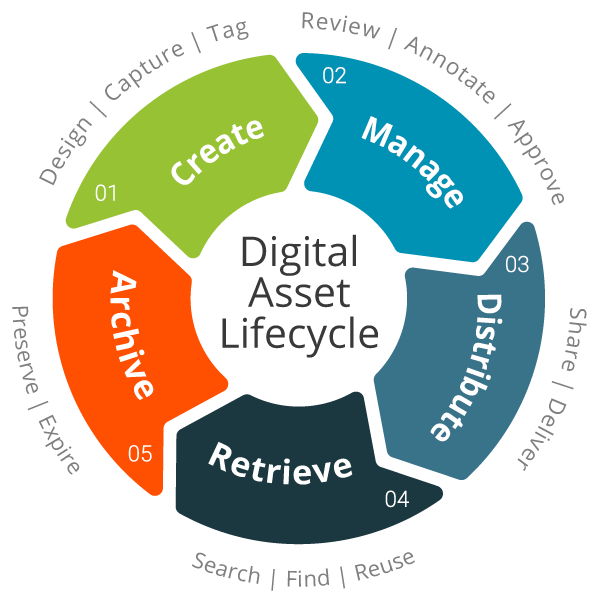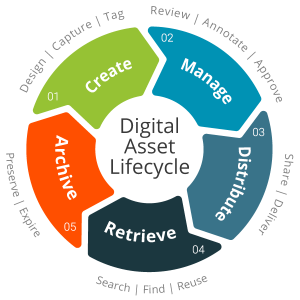By Jasmine Clark
https://www.youtube.com/watch?v=EXYzj6qwCCk
Virtual reality as a learning tool is not a new concept. Companies like Immersive VR Education Ltd. and zSpace are already doing work with virtual reality as a tool for education. Stories like this one, from a Toronto classroom, show the great promise of this rapidly growing technology. There are fairly well established tools for development and distribution, but what role can universities play in all of this? To answer this, it helps to understand the lifecycle of digital assets.
Image from https://filecamp.com/blog/what-is-digital-asset-management/
The above graphic is one of many available to describe how digital assets are managed from creation to preservation, or as this graphic excludes, disposal. The creation, management, and distribution of virtual reality assets have all experienced a recent boon, but effective retrieval and preservation require appropriate metadata, storage, and long term planning and attention.
As it stands, the standards for the preservation of the various types of assets involved in the creation of virtual reality are still being developed. Work like that being done at the University of Oklahoma is moving further towards developing these standards, but there is still plenty of work to be done.
My interests lay in the potential for universities to act as producers and distributors of assets to be used in educational virtual reality, much in the same way they produce and provide access to other digital material. I am also interested in the way that these materials could be made easily available to instructors. The above mentioned Immersive VR Education Ltd. has a product called Engage described as:
“…an educational platform, giving students and teachers alike the means to communicate in a safe, virtual environment. This multi-user system allows up to 30 users into a single private lesson or meeting, from any location. Teachers are able to stream in virtual assets using the ‘Immersive FX’ presenter tools, and record their lectures with the ‘projected presence’ feature. Virtual ‘field trips’, interactive whiteboards, and streaming media are all features of this program. ”
This type of technology is fascinating in its potential to increase access to educational materials.
In addition to questions around the lifecycle of VR assets, I am also interested in the ability to access those resources. Difficulties in closed captioning (for the deaf and hard of hearing) and the necessity of audio description (for the blind) are necessary discussions, especially when discussing educational materials. Expect me to continue to delve into these questions in future blog posts.

